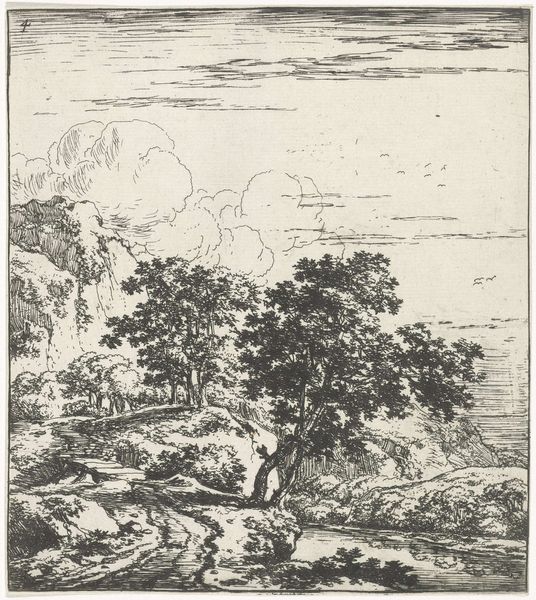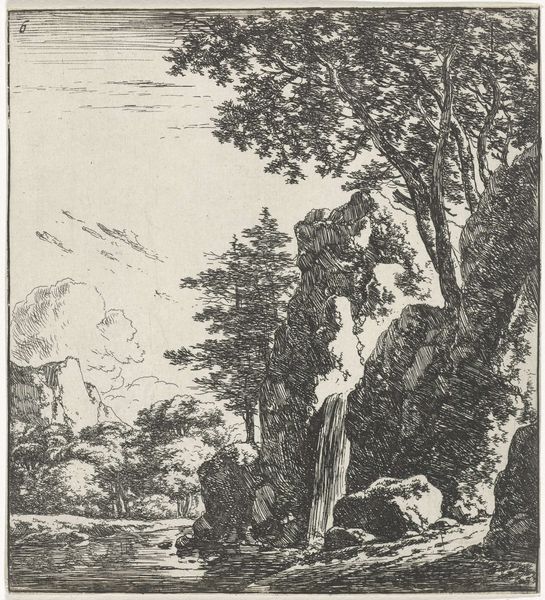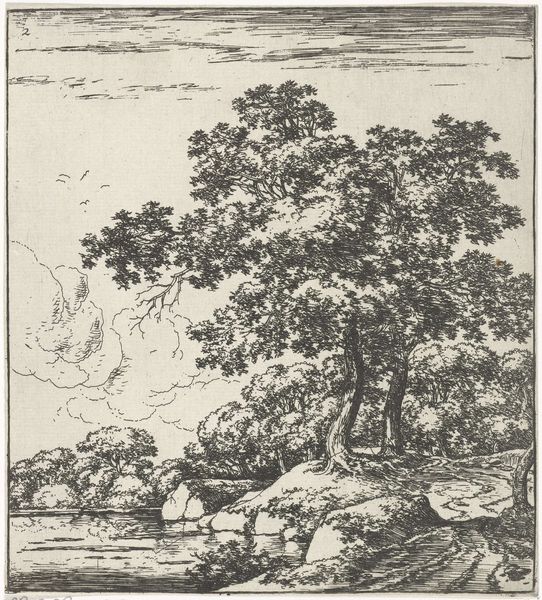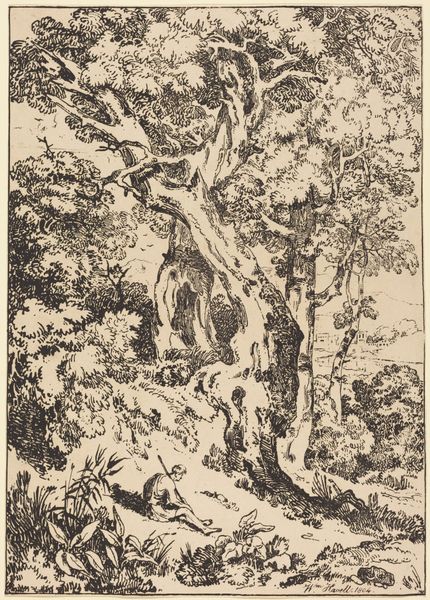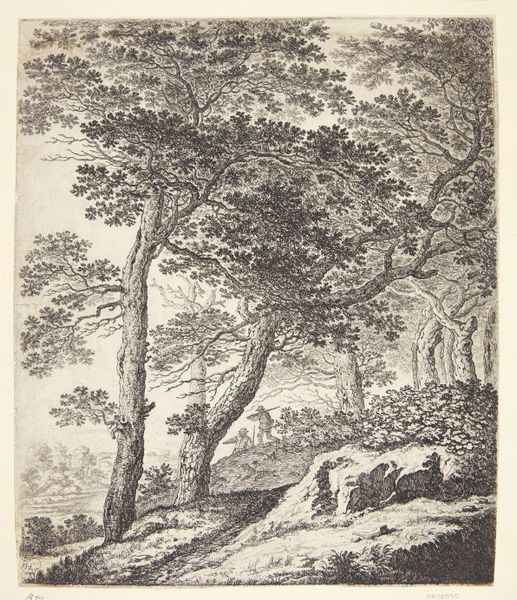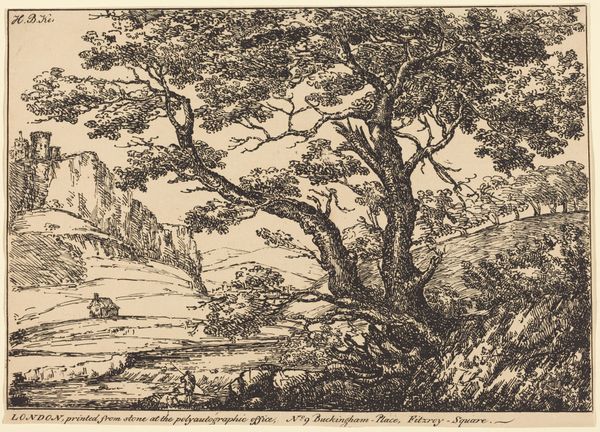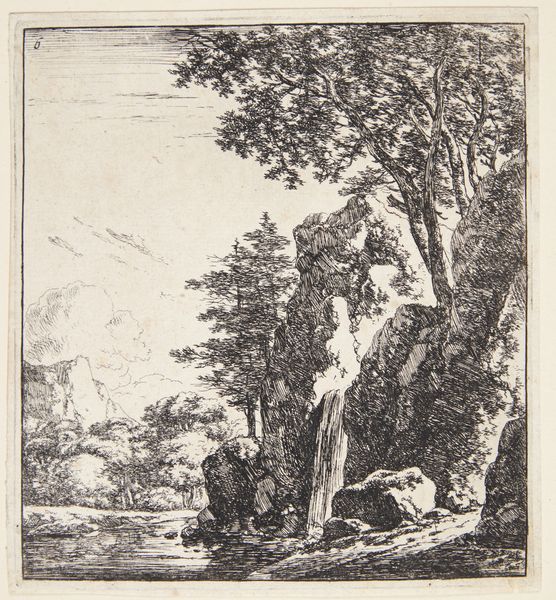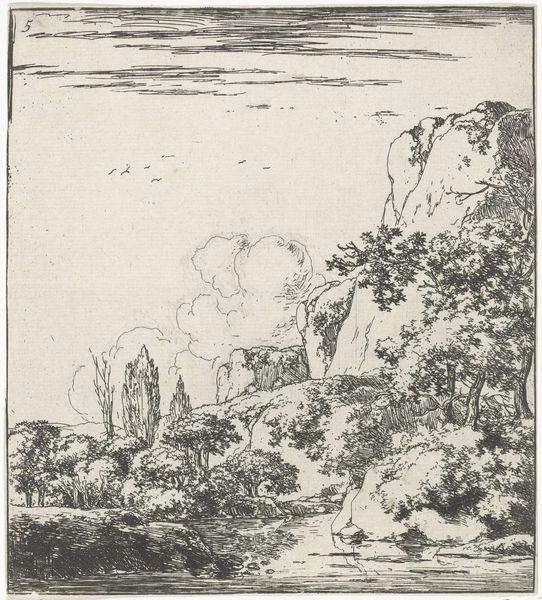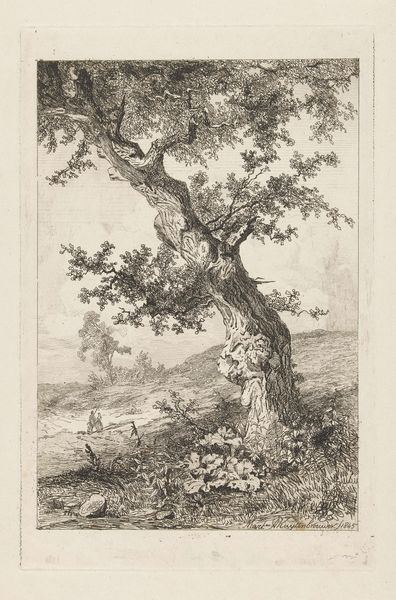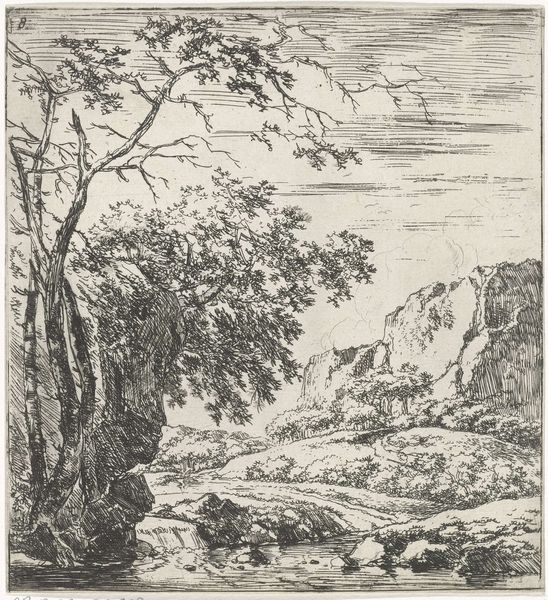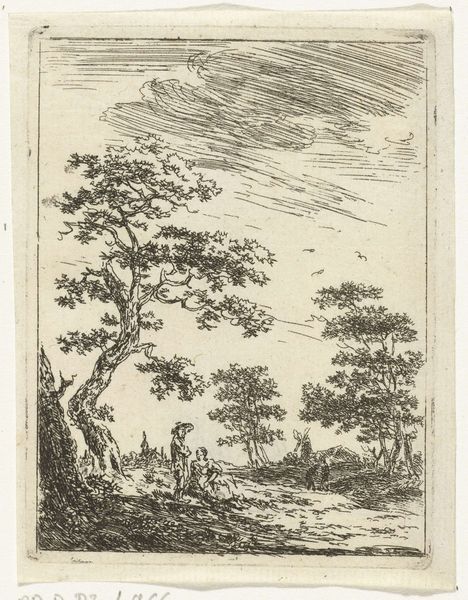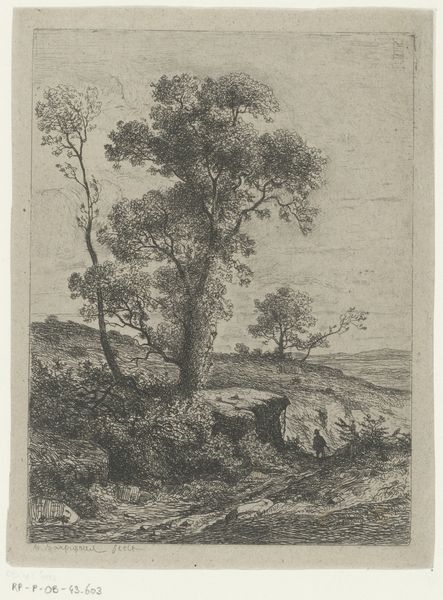
drawing, ink, pen
#
pen and ink
#
drawing
#
ink drawing
#
pen drawing
#
dutch-golden-age
#
landscape
#
figuration
#
ink line art
#
ink
#
line
#
pen
#
realism
Dimensions: height 240 mm, width 152 mm
Copyright: Rijks Museum: Open Domain
Editor: Here we have "Landscape with a Group of Trees" by Jan Lievens, created sometime between 1625 and 1674. It's a drawing done in pen and ink, and it feels both realistic and almost dreamlike in its detail. The use of line is really striking! What catches your eye about this piece? Curator: Well, looking at it through the lens of the Dutch Golden Age, we see a culture grappling with its identity. Landscapes like this were not just pretty scenes; they were assertions of ownership and national pride in a newly independent nation. This drawing speaks to the evolving societal relationship to the natural world. Where do you think a landscape like this would have been displayed and who might have been its target audience? Editor: Maybe wealthy merchants showing off their refined taste? Or perhaps it was more accessible, like prints sold in the market? Curator: Precisely. The question of accessibility is key. Think about the rise of the middle class during this period and their aspirations. How did art like this contribute to shaping their self-image and their place in society? Linevens choice to focus on a relatively unpopulated scene is also a narrative of the power of landscape that wasn't so tied to commercial aspects. Editor: That’s a great point, it's interesting how a seemingly simple drawing could be wrapped up in ideas of national identity and class aspirations! Curator: Indeed. It also highlights how seemingly 'natural' landscapes are always mediated by cultural and social forces. Examining the artwork through this historical context adds another dimension. Editor: Absolutely! Now I’m seeing more than just a pretty drawing of some trees; it's a window into a specific time and place and its values. Thanks for pointing out how social factors change how to understand art! Curator: My pleasure! The fun thing about studying art history is to show how objects are the product of complex historical negotiations, rather than a flash of uninhibited personal expression.
Comments
No comments
Be the first to comment and join the conversation on the ultimate creative platform.
